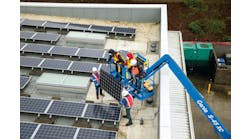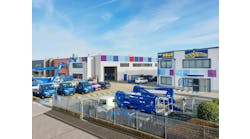Among larger rental companies, probably the most popular software is RentalMan, produced by Wynne Systems. RER interviews Mike Stilwagner, vice president of Wynne Systems, Irvine, Calif.
RER: How does your software facilitate shop management?
Stilwagner: Through visual and paper reporting of what is in, outbound, and in the field due for service.
How does your software facilitate the scheduling of maintenance according to manufacturer-recommended intervals?
Maintenance intervals can be set by Category/Class and manufacturer when multiple makes are in the fleet or by individual asset numbers for one-off scenarios.
What role does RentalMan play in the organization of warranty information?
Multiple warranty dates can be kept for a single asset. For example, there can be a different warranty date for the drive train, electrical system and the hydraulic system if the manufacture provides such warranties. This functionality can also be used for replacement of warranted components such as engines, alternators and starter motors.
How does RentalMan facilitate keeping track of service history on an individual machine?
Each service procedure, regardless of complexity, is kept at the asset level. From line-by-line steps preformed during a check in, to capitalized replacement of an engine, the detail is kept indefinitely online. All service records can be reproduced instantly. The service records continue even after the equipment is sold to a customer.
Does your software facilitate parts organization? What about the buying or selling of parts online?
We work with third-party software, SmartEquip, to seamlessly place parts orders with manufacturers. Parts catalogs and pricing available as a download from an online resource can be imported into RentalMan for real-time reference and to facilitate creation of accurate records.
How does RentalMan facilitate the organization of the shop in regard to prioritizing jobs or separating rental fleet repair from the repair of customer-owned equipment?
RentalMan Dashboard displays the down equipment in highest utilized order by default. Dashboards can be created to show each technician equipment within his specialty, and by highest utilization. For customer equipment, the dashboard can display by due date or any other key indicator our client desires. In order to facilitate ease of use, the same work order system is used to create customer-billed work orders as well as internal work orders.
For repairs and service on site, reports can be produced by jobsite, customer, major project and geographic territory to show equipment in the field that needs preventive maintenance (PM); repair or factory retrofit to facilitate dispatching of field service technicians. RentalMan’s logistics, Truck Dispatch, will track on the time and date, as well as the status of service calls. Statuses being open, in progress, completed, etc.
How does your software facilitate cost management and cost analysis, the management of cost and income in the shop itself? Can it help the user keep track of the profitability of a particular piece of equipment by helping shop managers analyze maintenance and service costs?
Return on investment is often calculated including the cost of labor and materials used for PM and repairs. It is important that those costs do not include repairs billed to customers, or claimed as warranty, unless of course, the warranty claim is denied. Capitalized repairs are also excluded from PM and repair cost, but are automatically added into the depreciable basis of the equipment. All of this is taken into account in RentalMan. We have a data element we called Labor Code that is used to narrow the analysis of repairs into specific areas such as electrical, structural, drive train and more to compare year over year by manufacturer or model areas where there may be engineering defects, or improved operator instructions.
A more complex implementation may break the service department into a separate profit center. RentalMan can breakout work orders in their entirety, or at the line item level, to bill various departments. In example the service department may bill the sales department for preparation of new equipment prior to delivery to a customer. The sales department may also be billed for warranty work on used equipment sales. In turn the rental department can be billed for ready-to-rent procedures; preparation of new equipment for the rental fleet; and repairs that are not billed to customers.
Service costs also include time for training and facility maintenance. That time needs to be accounted for as a cost normally to the service department.
Does RentalMan help the field service technician? Can he access information using a wireless device, laptop or other means?
In our clients’ experience we have found that more technicians need to use laptop computers to help with diagnostics of equipment as well as the keeping of service manuals available electronically. With that requirement the technician can access the system via his laptop connected to his branch via modem, WiFi or high speed cellular. With that connection the user has full access to all of RentalMan as if he were in the shop. Work orders, manuals, parts, purchase orders (PO’s) to name some. Wynne Systems has developed technology that allows for work when not connected to the network that will synchronize as soon as the device is next connected. We have not released any specific product involving this technology for the service department to date.
Another approach is the use integration with Qualcomm’s OmniTRACS. There is a specialized terminal installed in the vehicle that communicates with RentalMan’s Truck Dispatch to send information about service calls that are in progress and in the queue. This technology also integrates with the trucking department so that field exchanges of equipment can be queued and tracked.
Does your software provide the technician with a checklist of items to be performed at various intervals or items to check before a returned piece of equipment can go to the "ready" line?
A checklist is printed, or displays in a handheld terminal upon return of the equipment to the rental yard. The list will consist of the tasks that are due. Each task can be set to be due by meter, rental days or calendar days whichever comes first. A step can be configured to change the lube oil and filter every 250 hours, 190 days or 30 rental days. Steps can also be set for preparing equipment going out on rent. Step such as setting voltage on generators or pressure on compressors.
Does RentalMan track hours of a machine that's in the field and therefore aid in scheduling in-field maintenance?
Integration with telemetric providers allows the service department to see what equipment is due for service now as well as projected service intervals based on use on the current contract.
The system will also tell the service department the other equipment on the project and how close it is to needing service. There are multiple user-defined levels of how close units are due for service. Due now, within 10 percent or within 15 percent, for instance, can keep from returning the same project where equipment was PM’d just a few days ago.
Do you find that your rental company customers are increasingly interested in using software to help organize their shop and service capability?
Very much so and with greater sophistication so that current technology can be used simply. The right thing to do must be the easy thing to do.
Does your system automatically update inventory availability after shop uses the system to report on completion of service tasks?
Our inventory system is fully integrated into every area of our applications. This allows for online real time information about what is in stock, committed to work in progress and claimed for warranty reimbursement.
Reorder points can be set by “min/max”, “usage” or “economic order quantity” for replenishing stock levels.
We can upload supplier price updates as well as keep superseded information up to date.
How will this area (the facilitating of shop organization) evolve in the coming years, in your company's software and in the industry as a whole?
Taking the information gathered in the shop, in the field and keeping it up to date seamlessly will be the evolution. This will be done with laptops, telemetrics and handheld terminals.
The use of RFID tags allows information to be written to this identifier such as last service date and current contract. RFID also allows for pre-selecting equipment to be delivered.
“Dashboard” applications will tell technicians what needs to be worked on next by reservations and utilization and based on the technician’s skill level.
For all of this, the industry needs to accept that a person working at a discount oil change shop has to use a computer terminal as well as the professionals at auto and equipment dealers, so should the rental yard technicians. It is our job as software providers to provide the easy way to do the right thing.





